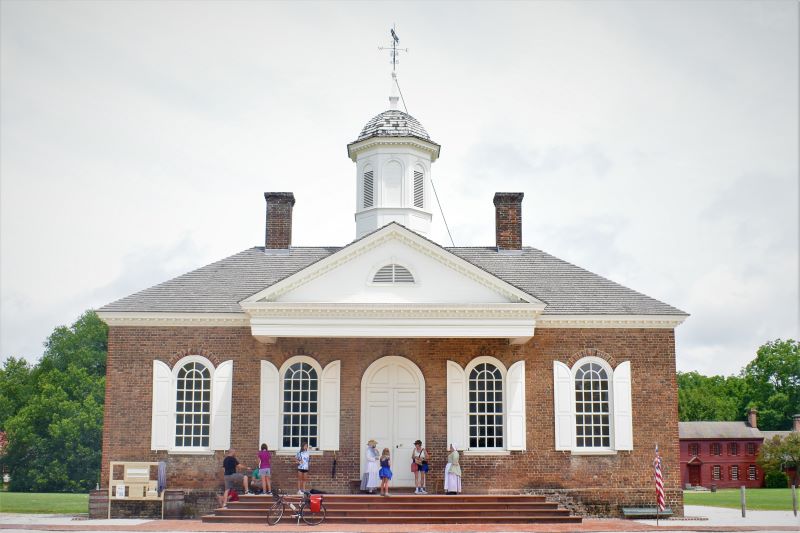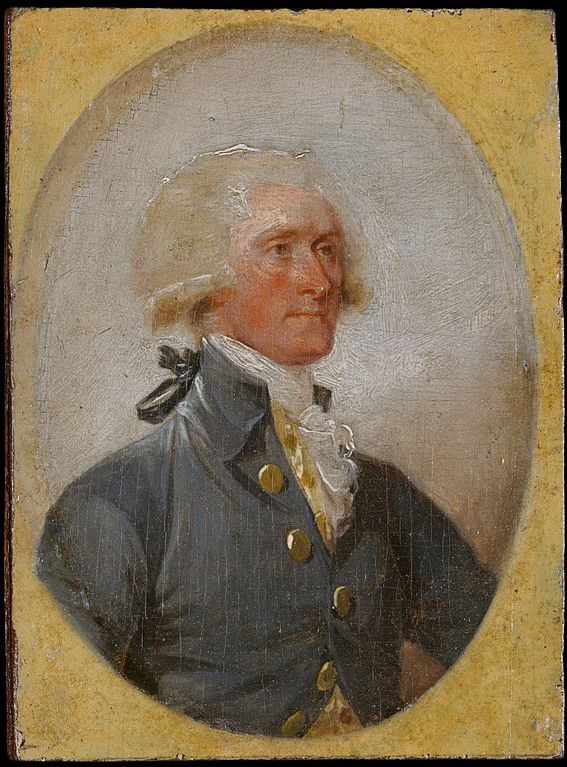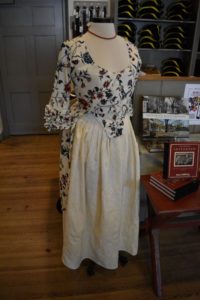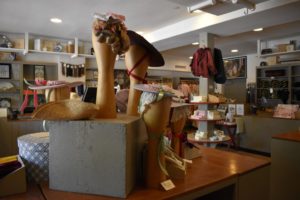When you visit Colonial Williamsburg, you see more than a few artefacts or recreations – an entire section of town has been restored, repaired and rebuilt to look like 18th century Virginia.
There are modern conveniences, but it’s very easy to feel you’re back in 1770’s America when you stroll down the street past block after block of homes, shops and restaurants of the period. I read there were nearly 100 original buildings and 300 rebuilt ones on the site but you don’t realize how massive that undertaking is until you see it in person.
Several buildings are open on any given day, so you can learn about all the aspects of colonial life. There are also shops and restaurants operating much like they would have in the 1700’s, you can even buy period clothing, silverware, pottery, and more made by the historical interpreters on site using original techniques and materials.
There are several hotels nearby, or if you really want to feel like a colonial resident, you can stay at one of the historic homes in town! I didn’t realize you could actually STAY in some of the homes until I got back from my trip. It looks really reasonable too – rent a room for less than $200/night or a whole house for $200 & up, depending on how many rooms you need. Guess I’ll have to go back!!
Getting There
Location: South-East coast of Virginia
Transport:
Nearest major airports are Norfolk, VA (ORF – 50 miles) or Richmond, VA (RIC – 45 miles)
From the airport, it’s probably easiest to rent a car to get around. There are other great sites in the area, so having a car gives you more freedom. Otherwise there are buses and trains you take to get from the airport if you don’t mind a few transfers.
Highlights
Must-See:
Already have a good idea of the history of Williamsburg? Then bypass the history lesson and Skip to the Trip!
The British Capital Relocates from Jamestown
The first established British colony in the New World was the settlement nearby at Jamestown, Virginia, which was founded on the James River in 1607. The colony had a rocky start but the realization that tobacco would be a valuable cash crop turned their fortunes around.
However, in 1699 a fire at Jamestown led colonists to petition the regional government to move the capital of the Virginia Territory further inland and the town of Williamsburg was founded five miles away. Check out this post to learn more about Jamestown and what you can see there!
Following the tradition of the naming of Virginia (Virgin Queen Elizabeth I) and Jamestown (King James), Williamsburg was named for the reigning monarch at the time, King William III.
Historical side note on William III: this is the monarch that ruled in tandem with his wife, Queen Mary II. This is the pair that lent their name to the College of William & Mary, which was founded here in 1693.
This is also the William that fought at the Battle of the Boyne in Ireland in 1690, ending the hopes of the Catholic Jacobites to restore a Catholic monarch to the throne.
Another of his titles was the Prince of Orange — which is referenced as the color of Protestant Northern Ireland in the Irish flag!
The Capital of Virginia Moves Again
Williamsburg remained the capital for nearly 100 years, but in 1780 it was moved to Richmond, which remains the capital today. Much of the preservation of the town has been credited to the change in the State capital. Because the growth and focus was on Richmond, much of the 18th century world of Williamsburg was preserved to some extent.
Colonial Williamsburg Restoration
The fact you can visit Colonial Williamsburg today is the result of a massive preservation effort at the start of the 20th century. One man known as the “Father of Colonial Williamsburg” is to thank for this amazing living history experience.
William A. R. Goodwin was born in Richmond, VA a few years following the end of the Civil War. He was ordained in the Episcopal church and, in 1903, was assigned to the historic Bruton Parish Church in Williamsburg. He was inspired by the history of the area and led several efforts to raise funding to restore the church.
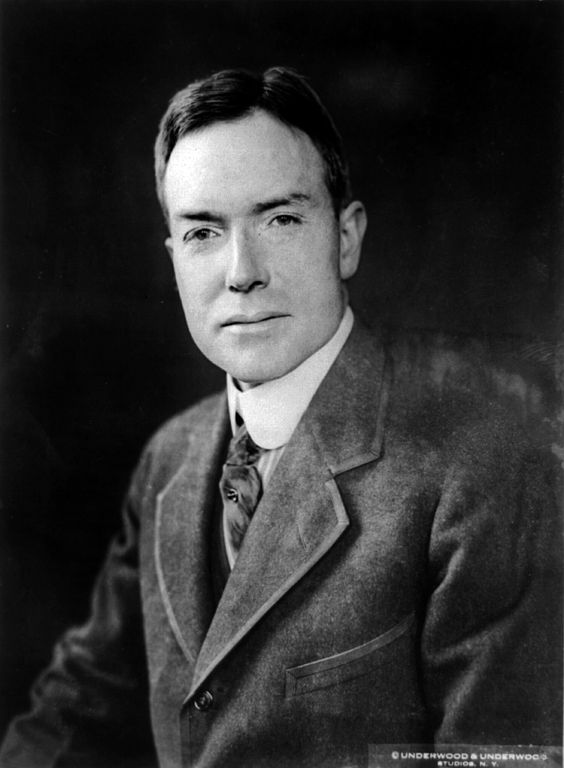
Eventually, Goodwin was transferred to a parish in New York for a period. Returning to Williamsburg 14 years later, he was shocked at the deterioration of the historic buildings of the area. As a result, he set about raising funds to preserve the 88 remaining buildings.
Goodwin tapped into his contacts from New York for support. In the 1920’s John D. Rockafeller Jr. established a foundation to restore and preserve the buildings of Williamsburg with Goodwin leading the team.
Today, more than 400 buildings and 90 acres of gardens have been restored to their 18th century design. Plaques on many buildings explain if it is an original building that has been restored or a more modern reconstruction of what was on the site during colonial times.
What to See on a Visit to Colonial Williamsburg
Historic Buildings Abound!
There are so many things to see at Colonial Williamsburg! When I was first trying to plan my visit I found it a little hard to navigate the website because there are just so many areas to explore!
Luckily, Colonial Williamsburg offers a series of different itineraries so you can get a sense of what to see in 1 day, 3 days, with kids, as a fan of the musical “Hamilton”… ok, the itineraries can be a little overwhelming too!
My advice is to grab a map of the site and just start walking. Buildings that are open for the day have a colonial flag in front of it, so as you walk around you will see what is open to go through. You don’t need a ticket to visit the site if you just want to walk around outside, but you do need a ticket to go through the buildings.
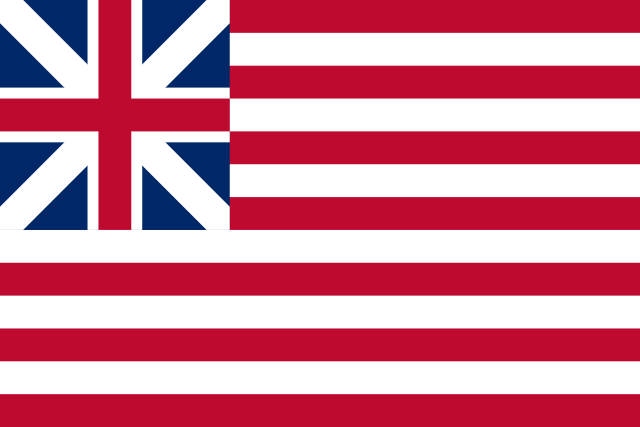
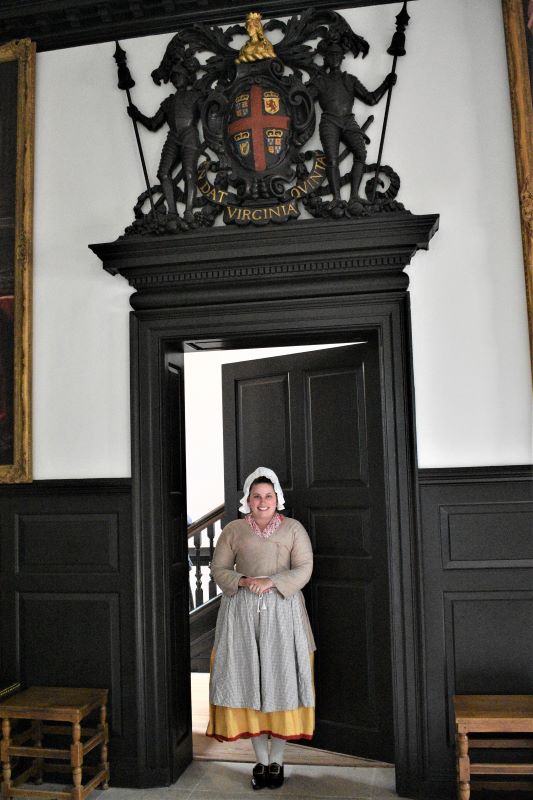
Courthouse
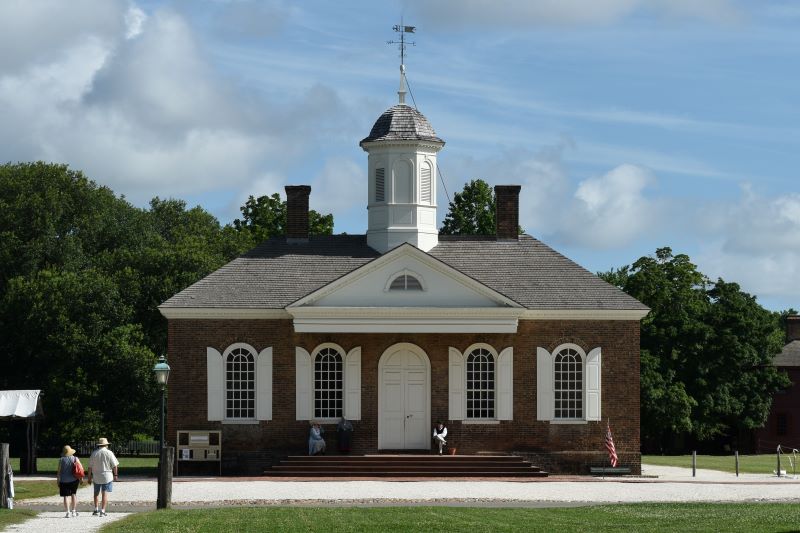
The courthouse building has an original exterior, but the interior was gutted in a fire in 1911. It has been rebuilt to the 1770’s appearance inside, so definitely go in to listen to the historical interpreter explain the judicial system of colonial Virginia.
I actually went back here a couple of times to hear about the site again, it was that interesting! You’ll learn what kind of cases were heard in this building compared to the courtroom in the Capitol building down the road.
You’ll also learn the origin of many terms we still use today: why lawyers take the “Bar” exam to “Pass the Bar” or what is a “Bystander”. Or the really juicy stuff, like how you end up being “Ear marked” as a thief.
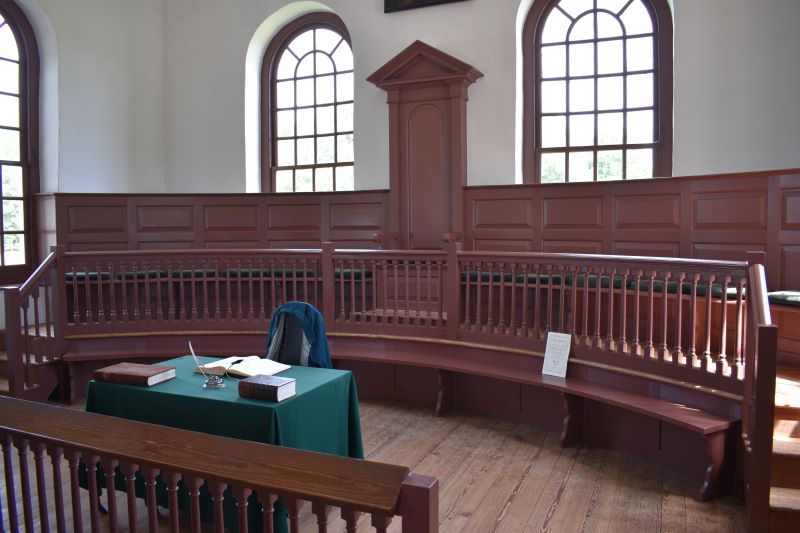
British Common Law was practiced, and I learned just how much of our judicial system today still mirrors much of the original system. The right to a trial by jury, being deemed innocent until proven guilty…these were all principles in Colonial times too.
Following the Revolution, British Common Law was all anyone really knew. And it had worked well for them, so the colonists kept much of it.
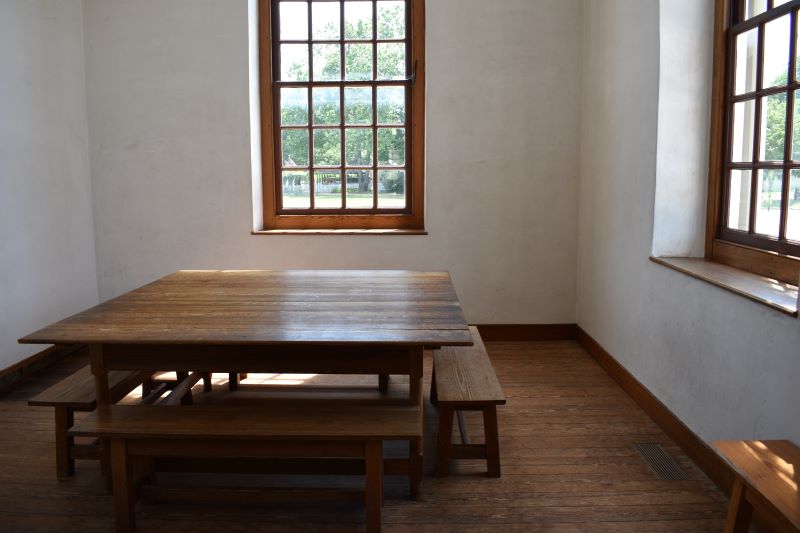
Capitol Building
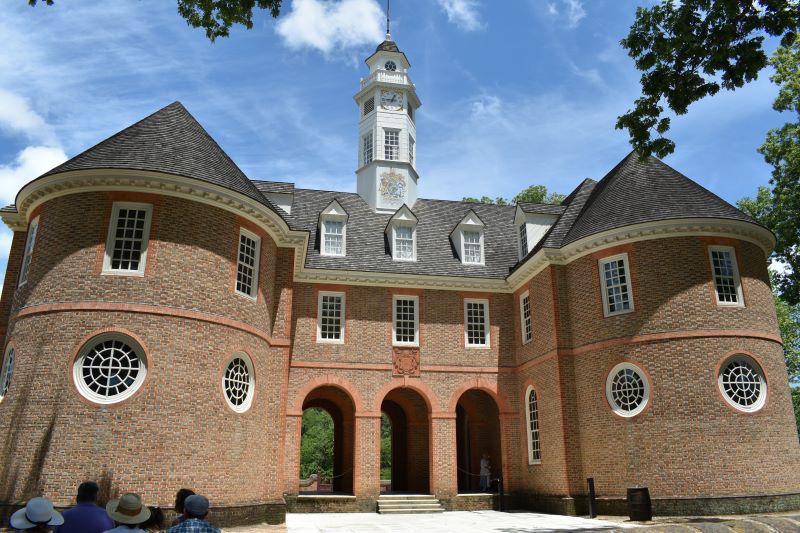
Williamsburg became the capital of Virginia in 1698 when the decision was made to relocate from Jamestown, the first successful British colony. A fire at the Jamestown site meant rebuilding was necessary and it was a good time to move the capital more inland away from the swampy, marshy Jamestown site.
There are 2 wings of the building connected by a covered breezeway between the halves. Virginia’s legislature compried 2 houses: the Council (appointed by the crown) and the House of Burgesses (elected representatives).
The building did not have fireplaces in an effort to avoid fires which had destroyed earlier capitol buildings. Fireplaces were added in the 1720’s…only for the building to burn down 2 decades later. They should have listened to the architect! A similar building was put up, this time without the grand curved sections.

I highly recommend taking one of the guided tours of this site. You’ll hear about the types of cases that were heard at this site compared to the courthouse down the street.
The crew of Blackbeard the Pirate were held and tried here in 1719 following capture in a battle in North Carolina. The Stamp Act was decried by Patrick Henry at the House of Burgesses here in 1765.
The capital was moved to Richmond, where it remains today, in 1799. The building was used for a variety of functions until it burned down in 1832. During the 1930’s restoration, the building was rebuilt according to the original design – this is what you see today.
Public Gaol (jail) - downhill from the Capitol
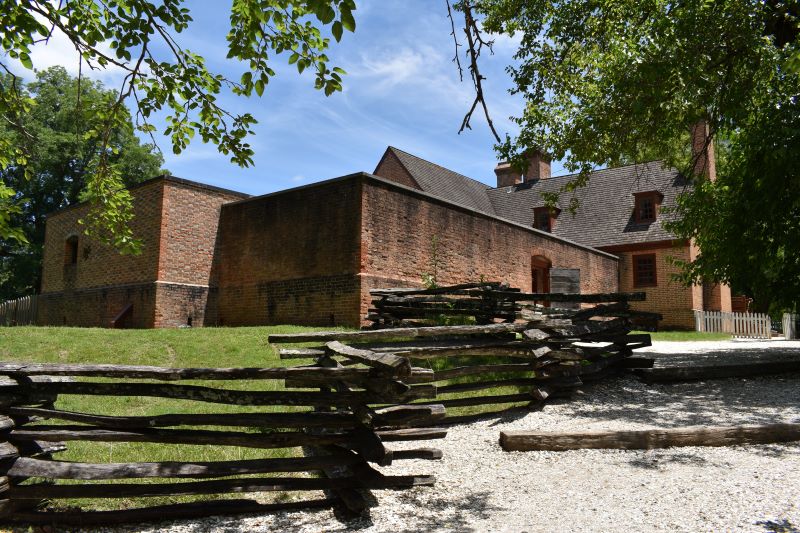
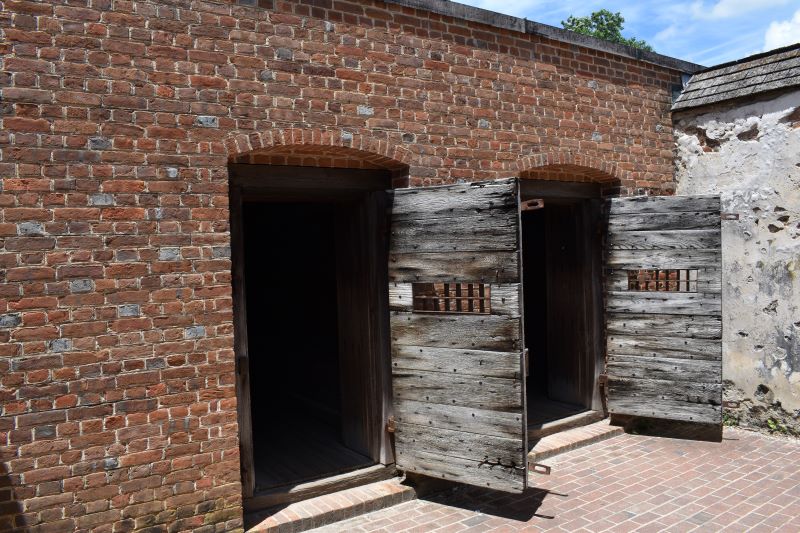
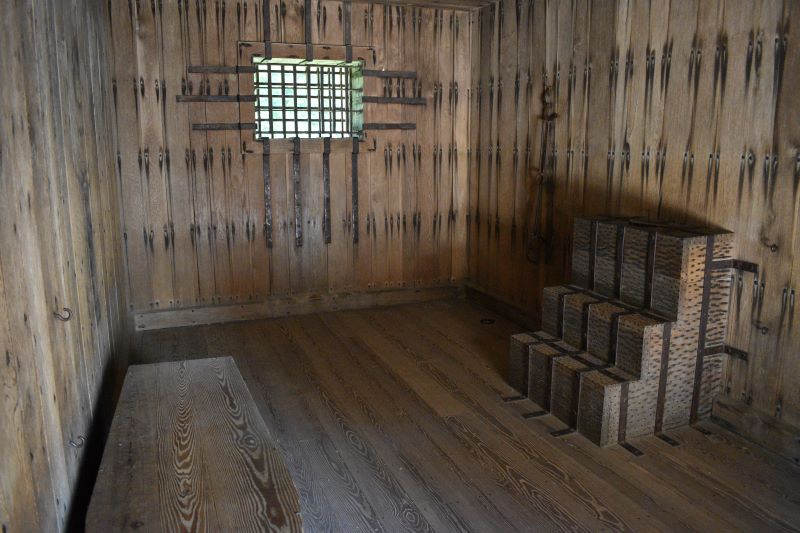
Governor's Palace
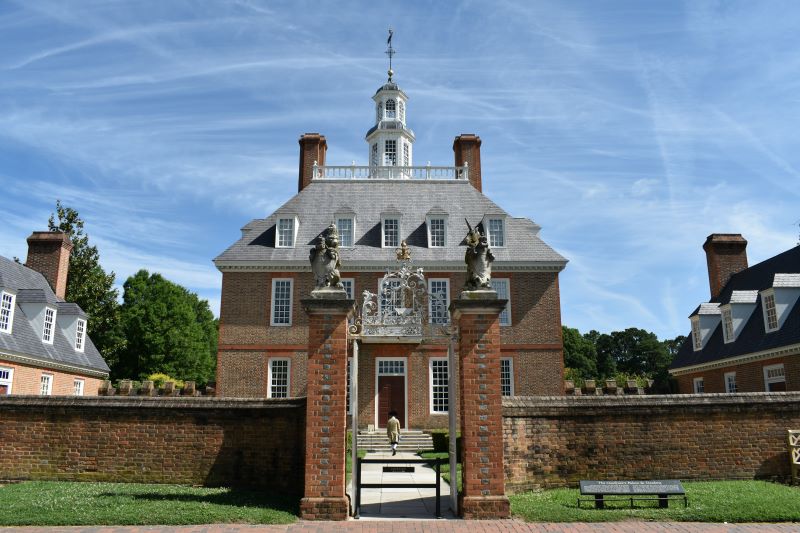
With the decision to move the capital of Virginia from Jamestown to Williamsburg, suitable lodgings for the governor were needed at the new site.
There are several buildings at the complex. The governor’s residence, offices, dining room and ballroom are located in the main center building. Other structures on site include the scullery, kitchens, laundry, smokehouse and lodging for the servants and staff.
Several notable men were governor of Virginia and lived in this building during the Revolution.
Patrick Henry “”Give me liberty or give me death!”) was governor from 1776-1779.
Thomas Jefferson lived here during his tenure as governor from 1779-1780. It was at the end of his time when he proposed moving the capital to Richmond for more protection during the war.
Once the capital moved to Richmond, the Governor’s Palace became a hospital for casualties from the nearby Yorktown battle. A fire destroyed the main building in 1781 and the outbuildings were torn down during the Civil War, the building materials being used for other structures in the area.

You can walk around the grounds at your leisure, but access inside the palace is by guided tour only. I definitely recommend taking the tour. The guides are full of knowledge and have different specialties.
This is another site I visited twice and each time learned something new about the building. The first time I was in the first tour of the day, so it was great that I could get right in, but the outbuildings weren’t open yet. The second time it was later in the day, so I did have a short wait but the kitchens were open to tour so that was neat!
Scenes from the Governor's Palace
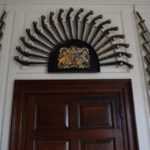

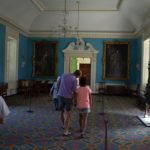
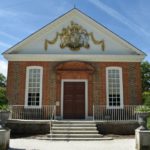
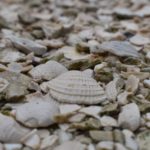
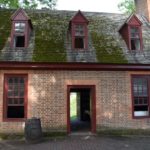
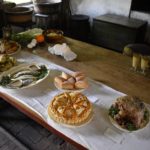
Shopping
Shopping in Williamsburg includes t-shirts, magnets and typical souvenirs but there are also a number of shops selling more specialty goods. More than once I saw people stocking up on the specialty soaps many stores carry.
At most of the shops, a wooden sign hangs out front to tell you what kind of store it is. Many are open to tour and learn about the tradesmen and women who work there. Some, like the Prentis Store, is an actual working store.
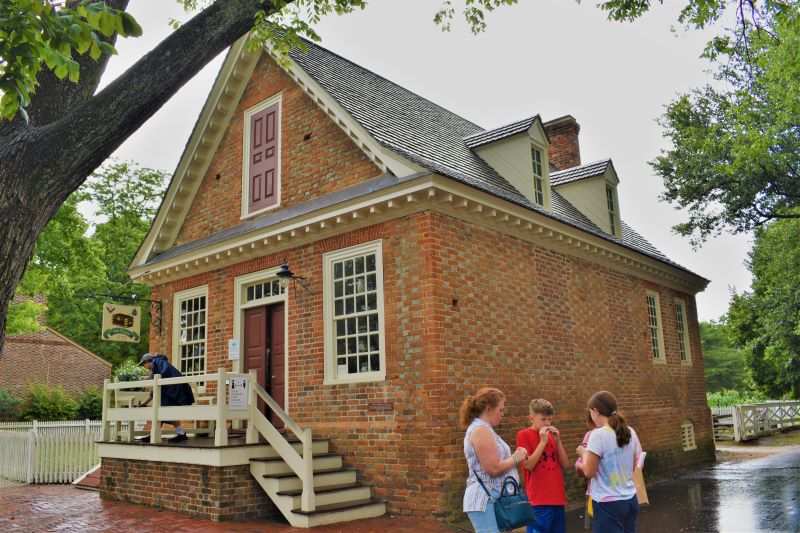
Inside Prentis Store you will find most of the items have been made by the interpreters on site: pottery, printed items, carved wood, silver goods. There are also some of the traditional souvenirs like soaps, local beer and the craft sodas you can get in town.
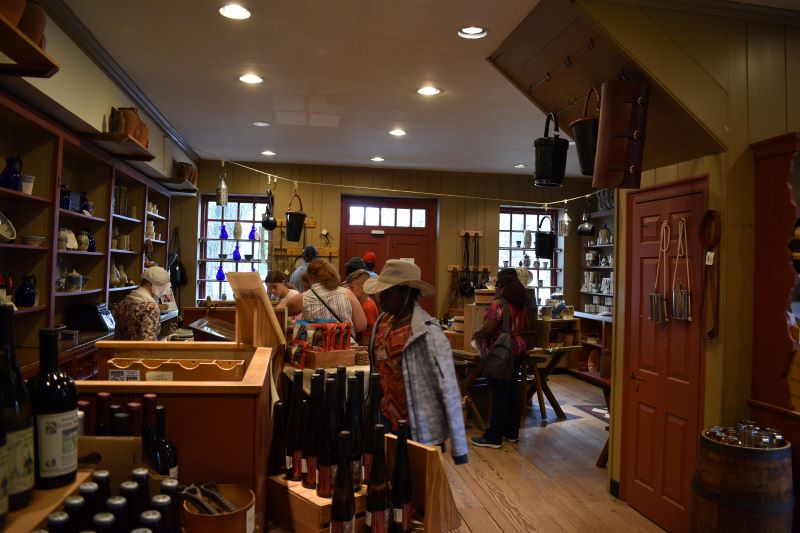
Another fun store to visit is the Tarpley, Thompson & Company store. Here I learned there is actually a difference between a store (like TT&C) and a shop (like Prentis’). A shop is where items are made – a store is where items someone else made are stored.
At Prentis, none of those items are made on site, they are brought in. At TT&Co items are made there by tradesmen & women (not ALL of the items but you get the idea). You can learn even while getting some retail therapy in Williamsburg! The storekeeper was very fun and informative. I wanted to buy something…but as beautiful as it was, handmade colonial clothing isn’t cheap (understandably)!
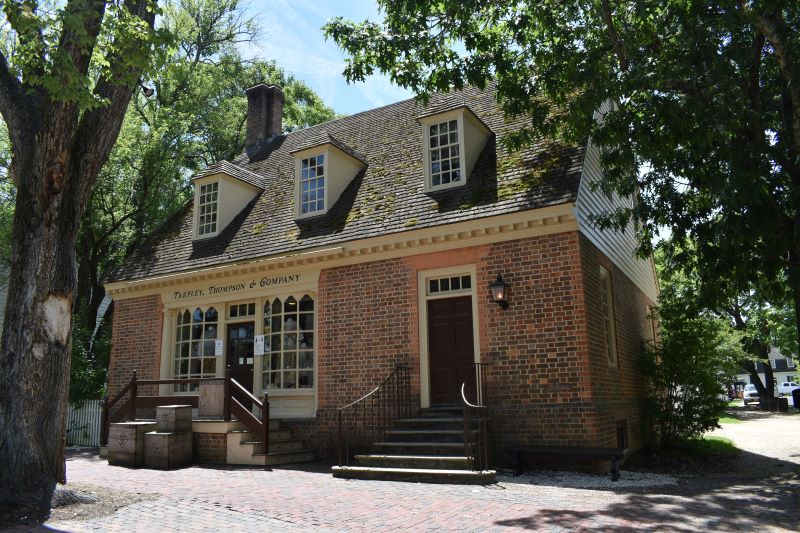
Historic Dining at Colonial Williamsburg
All the walking will certainly work up an appetite, and there are some neat colonial options on site for dining. Reservations are available online and I strongly recommend planning ahead here – for some places it is required. I visited during COVID, so capacity and availability was severely limited. One day I stopped to ask about lunch and it was a 2 hour wait.
I made a dinner reservation at the King’s Arm Tavern. The building was originally a tavern in 1772 and serves dishes based on colonial recipes. I had the peanut soup and short ribs on Johnny cakes. Very tasty!
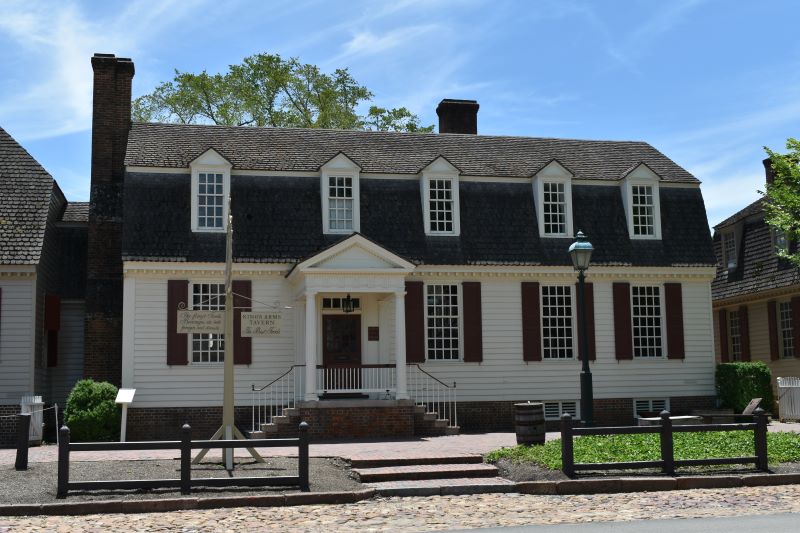

Like most places at Williamsburg, you can’t get away from learning a bit of history. For example, you’ll find that the napkins here are really big – the story goes you would tie it around your neck to protect your clothes. It gave rise to the saying “tie one on”!
You’ll also get some fresh bread and various relish dishes while you wait for dinner. The relish adds another layer of flavor to satisfy the diner. This led to another common saying – if you “relish” something you’re really enjoying it.
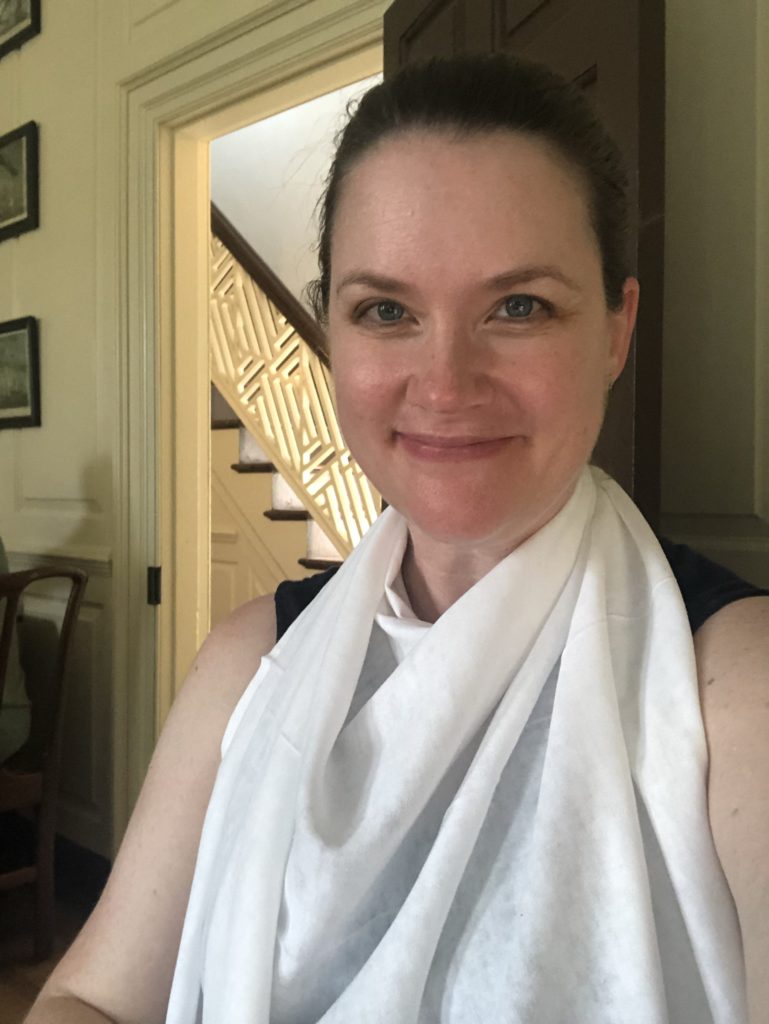
Fun Doorways of Williamsburg
One thing I really liked in Williamsburg was how different each building was. Today, we get so used to seeing subdivisions consisting of the same 3-5 builder models, so everything kind of looks the same.
In Williamsburg, all of the buildings are different and the front doors are no exception. I really like how the first floor is nearly always elevated, which leads to some really elegant front steps!

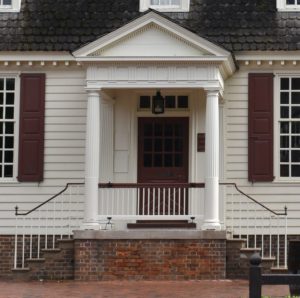
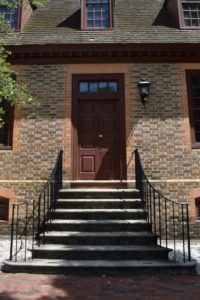

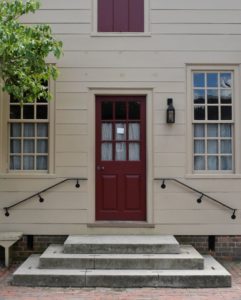
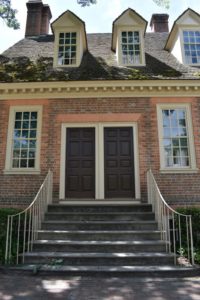
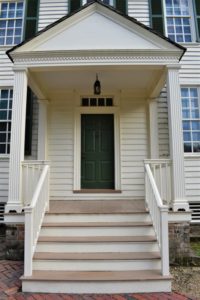
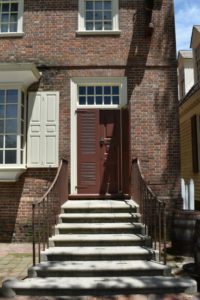

Don't miss the Art museums!!
The art museums aren’t huge, so I only left myself 90 minutes to tour them before they closed. That was a mistake – there is so much neat stuff inside! There are 2 museums sharing the space: the Decorative Arts museum which has things like furniture, artwork, clocks and other household pieces; there is also the Folk Art museum which has toys, statues, clothing and more.
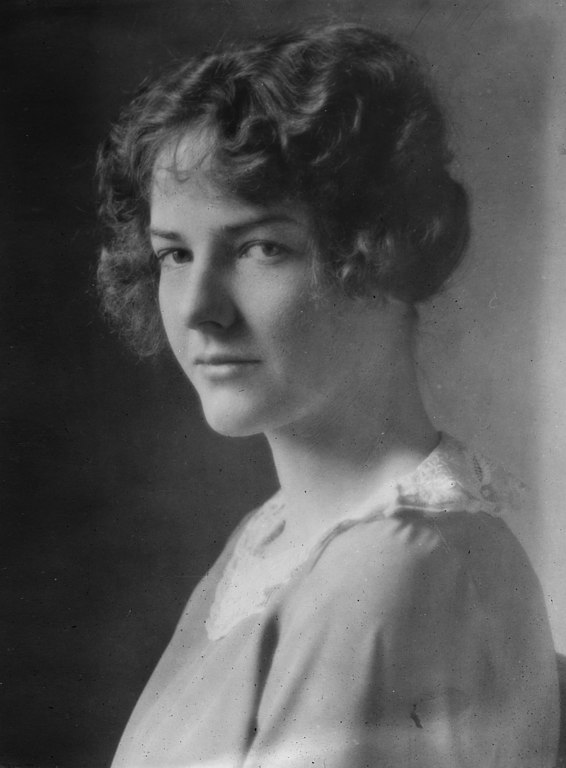
Abby Aldrich Rockafeller had the foresight to start collecting items which would have been commonplace in Colonial Williamsburg and it really adds to the historical nature of the site. Many of these items tend to disappear over the ages as they fall out of fashion, so it was really great that she sought them out to preserve them.
I also like the architectural salvage on display. Ornate door and window frames, brickwork and other building items that could not be used in the rebuilding of sites are preserved here.
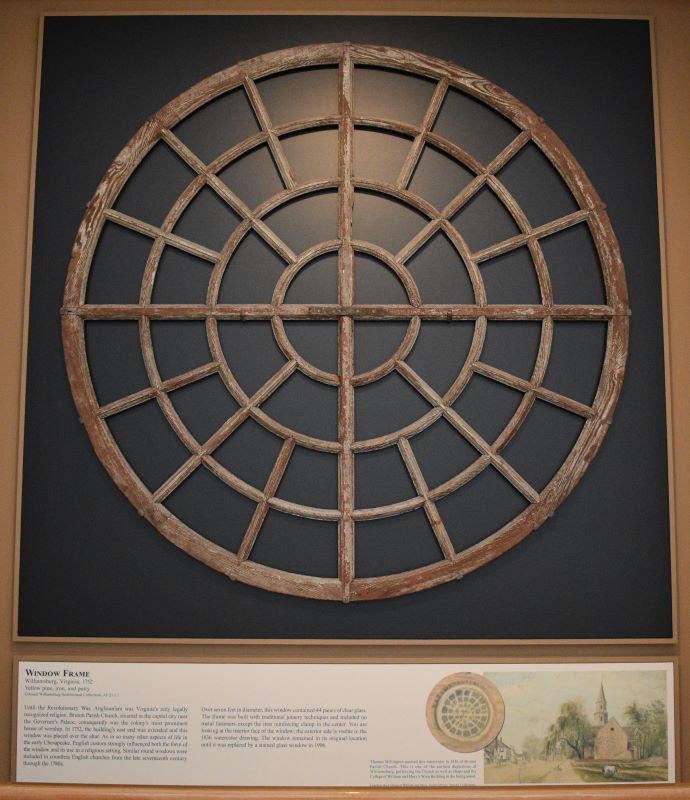
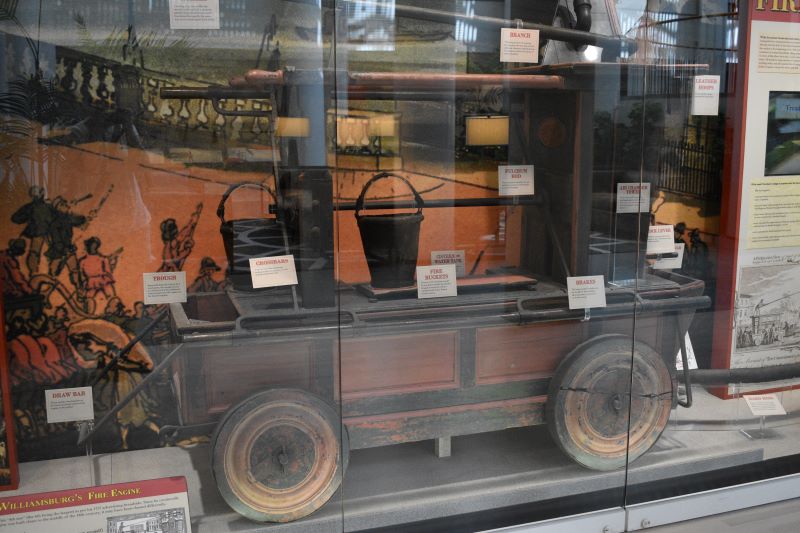
College of William and Mary
Only Harvard University is older in the United States, and the College of William and Mary has many prestigious alumni. A 17-year old George Washington received his surveyors license from the school and later served as chancellor. Presidents Thomas Jefferson, James Monroe & John Tyler each attended the school.
The campus of William and Mary is across the street from the modern shops and restaurants on the western edge of the Colonial Williamsburg campus.
One main attraction is the Christopher Wren Building. Christopher Wren was a famous architect in London responsible for helping to rebuild the city following the Great Fire of 1666. His designs were used for the campus facility, which was completed in 1700. The building was originally just referred to as “The College Building” but was later re-named “The Christopher Wren Building” in the 1930’s to reference its distinguished namesake.
At the time of its construction, building was the largest structure in the area, and was the temporary home of the capital while a purpose-built structure was going up nearby. The college was founded before the town of Williamsburg was!
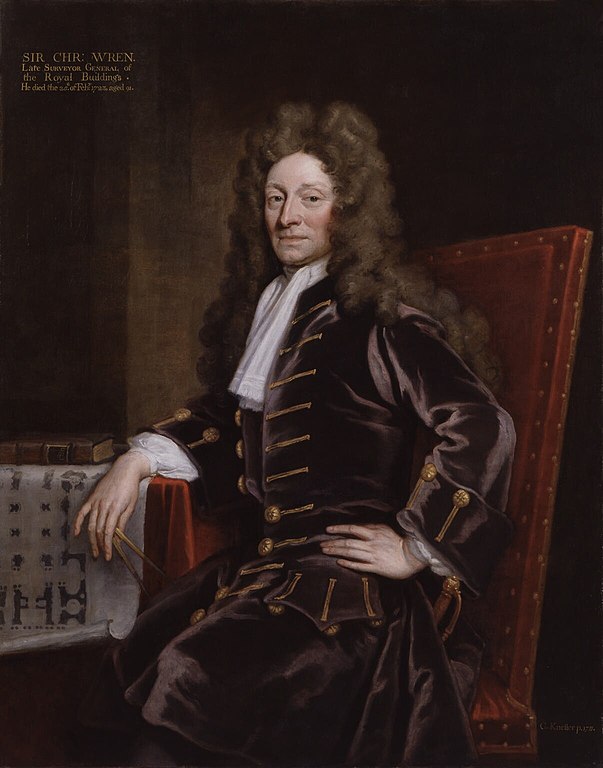
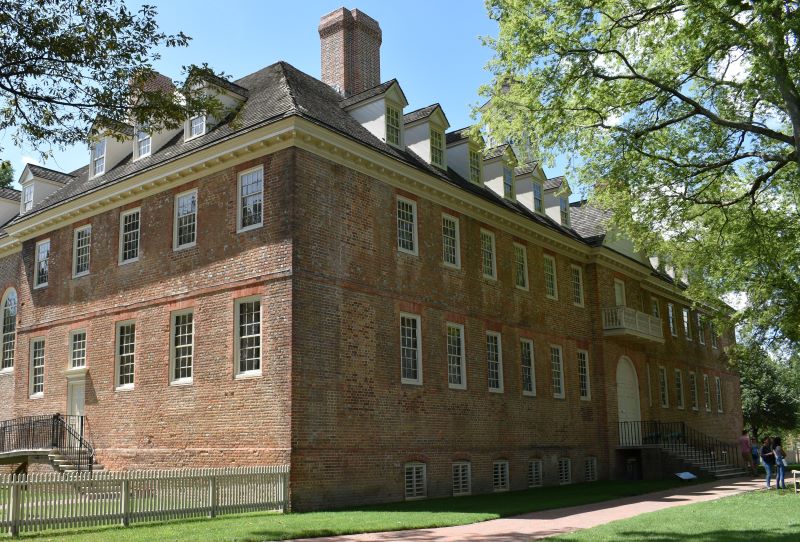
The College welcomes visitors, and the first two floors of the Wren building are open to the public. The historic grounds of the campus are also open to the public, so do take time to stroll around and imagine what it would have been like to take a class with Thomas Jefferson!
Guided tours are available while classes are in session. There is also a 1740’s era pipe organ in the Wren Chapel. Every Saturday morning you can attend an organ recital at the site. The recital is free but donations are encouraged to help the upkeep of the site.
There were several fires over the years which damaged the buildings, but they have been restored to the 18th century appearance. The President of the College has his office in the “Brafferton” building, which was the least damaged over the years and retains the most of its original structure. The most original exterior, at least — during the civil war the wooden floors inside were pulled up to use as firewood!
Already planning my return visit to Colonial Williamsburg!
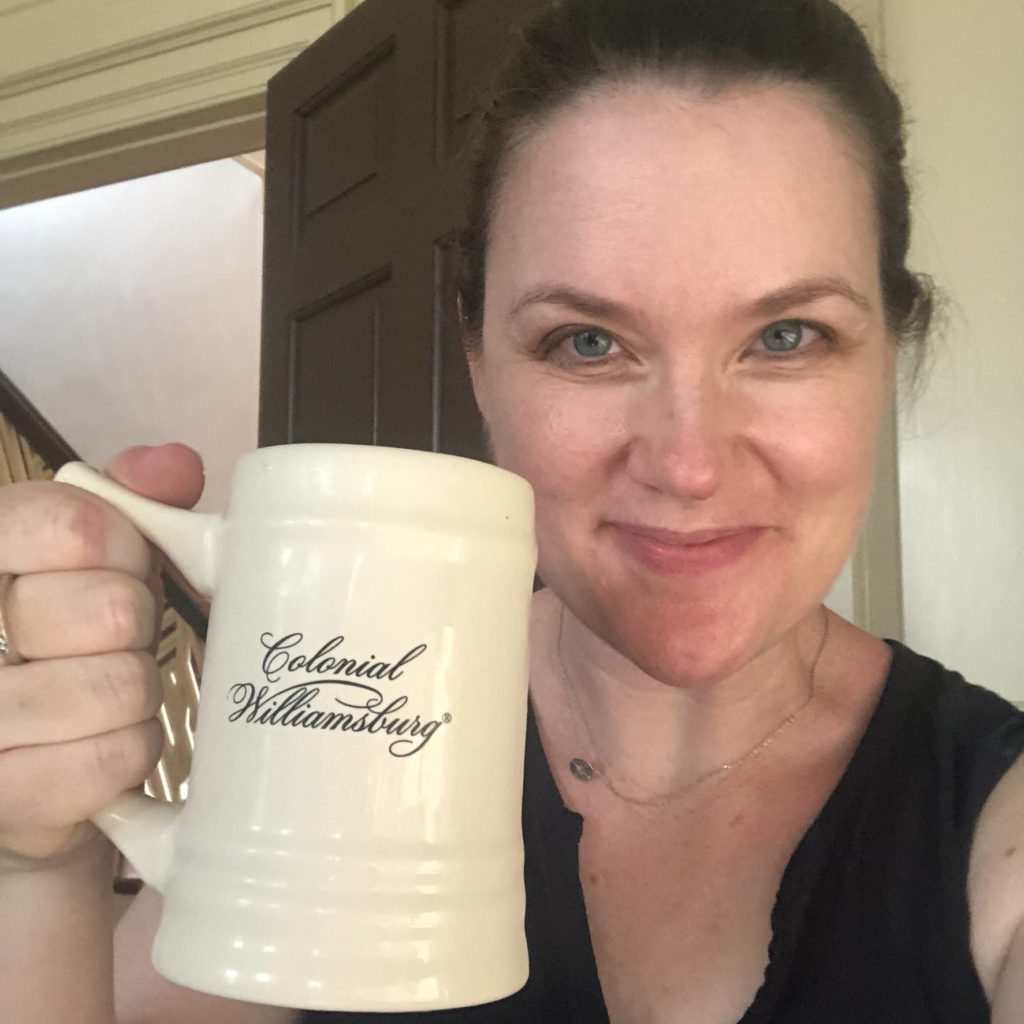
You know sometimes you visit a place and go home and think “That was fun, back to the bucket list!”?
I spent 2 full days at the site and still didn’t get through everything! I would definitely go back. One interpreter told me they are open 365 days a year. I think it would be fun to go during Christmastime. I bet it’s decorated beautifully!
I was there during a tropic humidity wave in June – heat in the 90’s and humidity in the 70’s so it was STEAMY. A blustery, wintery trip sounds pretty inviting!
Post Sources:
[bg_collapse view=”link” color=”#4a4949″ icon=”arrow” expand_text=”Show More” collapse_text=”Show Less” ]
City of Williamsburg website. History. Accessed 15 June 2021.
National Park Service website; park history online books. Colonials and Patriots section. Accessed 15 June 2021.
College of William and Mary website. History. Accessed 15 June 2021.
Wikipedia entry for Rev. Dr. W.A.R. Goodwin. Accessed 18 June 2021.
Library of Congress, Historic American Building Survey.
[/bg_collapse]

